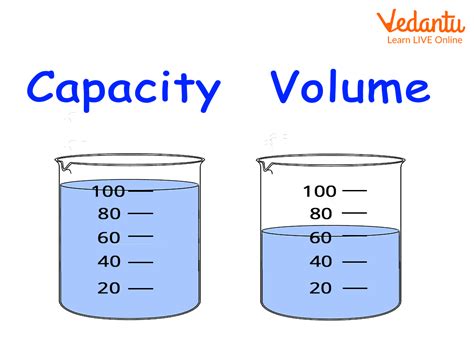Comprehensive Guide to Manual Pipe Bending Machines: Techniques, Safety, and Troubleshooting
Introduction
Manual pipe bending machines are versatile and cost-effective tools for shaping pipes in various industrial and construction applications. This guide provides a comprehensive overview of manual pipe bending, from selecting the right machine to troubleshooting common issues.
Choosing a Manual Pipe Bending Machine
Capacity: Determine the maximum pipe diameter and wall thickness the machine can handle.
Bending Angle: Consider the desired bending angles and ensure the machine has the appropriate bending range.
Material Compatibility: Ensure the machine is compatible with the pipe material you plan to work with, such as steel, copper, or PVC.

Hand Effort: Choose a machine with an appropriate leverage ratio to ensure comfortable and efficient operation.
Safety Considerations
Wear Protective Gear: Always wear safety glasses, gloves, and earplugs when operating a manual pipe bending machine.
Inspect the Machine: Check the machine regularly for any damage or loose parts before use.
Securely Anchor the Machine: Bolt or clamp the machine to a stable surface to prevent it from tipping over during use.

Bending Techniques
1. Preparation:
- Cut the pipe to the desired length.
- Deburr the pipe ends to remove any sharp edges.
- Lubricate the pipe bending shoe and mandrel.
2. Pipe Placement:
- Position the pipe on the bending shoe with the desired bending point aligned with the center of the shoe.
- Insert the mandrel into the pipe.
3. Bending Process:
- Slowly and evenly apply pressure to the pipe using the bending handle.
- Monitor the pipe's angle against the bending scale.
- Bend the pipe to the desired angle in one smooth motion.
Tips and Tricks
-
Use a Guide: Place a wooden block or metal bar next to the bending point to achieve precise angles.
-
Practice on Scrap: Before working on actual pipes, practice bending on spare pieces to develop muscle memory and prevent errors.
-
Anneal the Pipe (for Steel Pipes): Heat the bending area with a torch to soften the metal and make it more pliable.
Common Mistakes to Avoid
-
Overbending: Avoid bending the pipe past its maximum angle, as this can weaken or damage the pipe.
-
Underbending: Ensure the pipe is bent to the desired angle to avoid subsequent adjustments or leaks.
-
Lubrication Neglect: Always lubricate the bending shoe and mandrel to reduce friction and prevent galling.
-
Ignoring Safety Protocols: Never operate the machine without proper safety gear or with damaged components.
How to Bend Pipes Using a Manual Pipe Bending Machine (Step-by-Step)
Step 1: Prepare the Machine and Pipe
- Secure the machine to a stable surface.
- Lubricate the bending shoe and mandrel.
Step 2: Position the Pipe
- Measure and mark the bending point on the pipe.
- Align the pipe with the bending shoe and insert the mandrel.

Step 3: Bend the Pipe
- Hold the pipe and apply pressure to the bending handle.
- Monitor the angle against the bending scale.
- Continue bending until the desired angle is reached.
Step 4: Remove the Pipe
- Remove the mandrel and free the pipe from the bending shoe.
- Check the angle accuracy and make any necessary adjustments.
Troubleshooting Common Issues
| Issue |
Possible Cause |
Solution |
| Bent Pipe is Rippled or Kinked |
Too high bending pressure |
Reduce pressure and use a larger bending radius |
| Pipe is Cracked or Split |
Overbending or insufficient lubrication |
Check bending angle and ensure lubrication is applied |
| Machine Jamming |
Debris or damage |
Inspect the machine for obstructions or damaged components |
| Leaking Connection |
Inadequate sealing or overbending |
Inspect seals and ensure pipe is bent to within tolerances |
| Difficult Bending |
Insufficient lubrication or worn components |
Apply lubricant and replace worn parts as necessary |
FAQs
1. What is the average cost of a manual pipe bending machine?
A: Prices range from $100 to $1,000, depending on capacity, features, and brand.
2. Can a manual pipe bending machine bend a square tube?
A: No, manual pipe bending machines are not suitable for bending square tubes. Use a specialized bender for square tubing.
3. Is it possible to bend a pipe without a mandrel?
A: Yes, but it is not recommended. Using a mandrel prevents the pipe from collapsing or deforming during bending.
4. How much force is required to bend a pipe manually?
A: Force requirement varies based on pipe size, wall thickness, and material. A typical manual pipe bending machine can apply up to 2,000 pounds of force.
5. Is it safe to bend pipes at extreme angles?
A: Avoid bending pipes at angles sharper than 90 degrees. Excessive bending can weaken the pipe's structural integrity.
6. How to choose the right bending radius for a pipe?
A: The bending radius should be at least three times the pipe's outside diameter to prevent deformation or stress concentration.
7. What is the importance of annealing pipes before bending?
A: Annealing softens the pipe material, making it more pliable and reducing the risk of cracks or splits during bending.
8. How to prevent rust formation on newly bent pipes?
A: Immediately apply a rust-resistant coating or primer to the bent areas to protect against oxidation.
